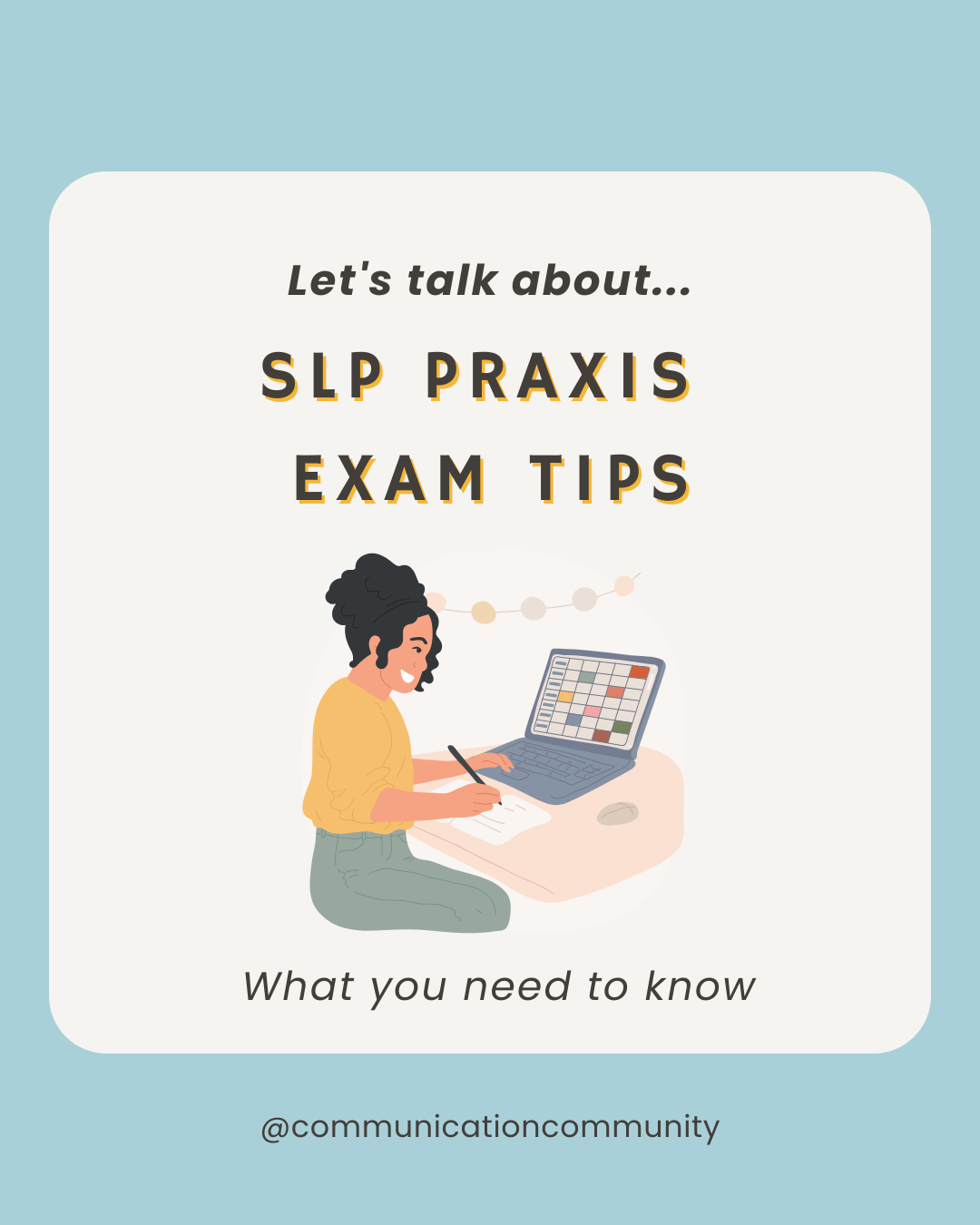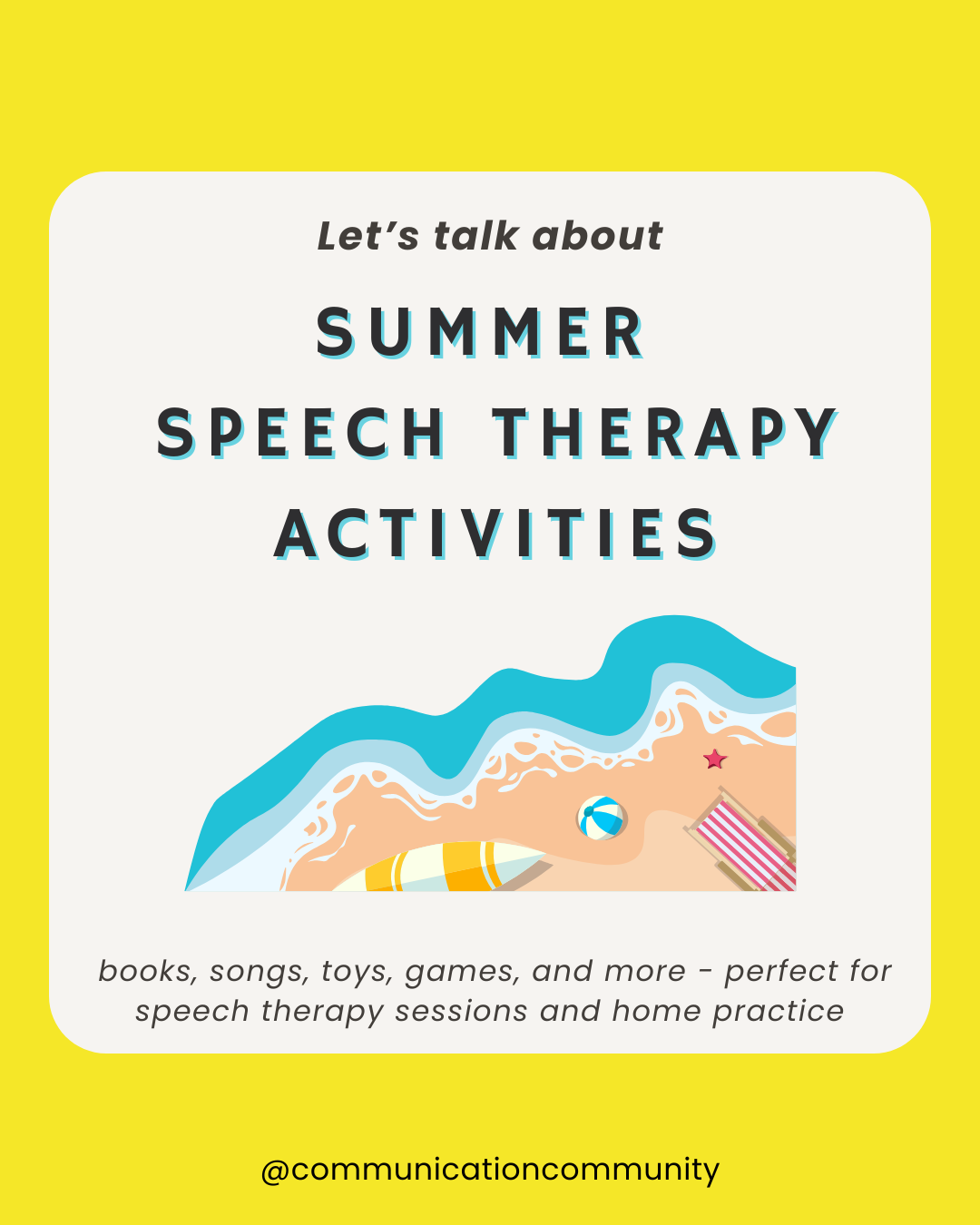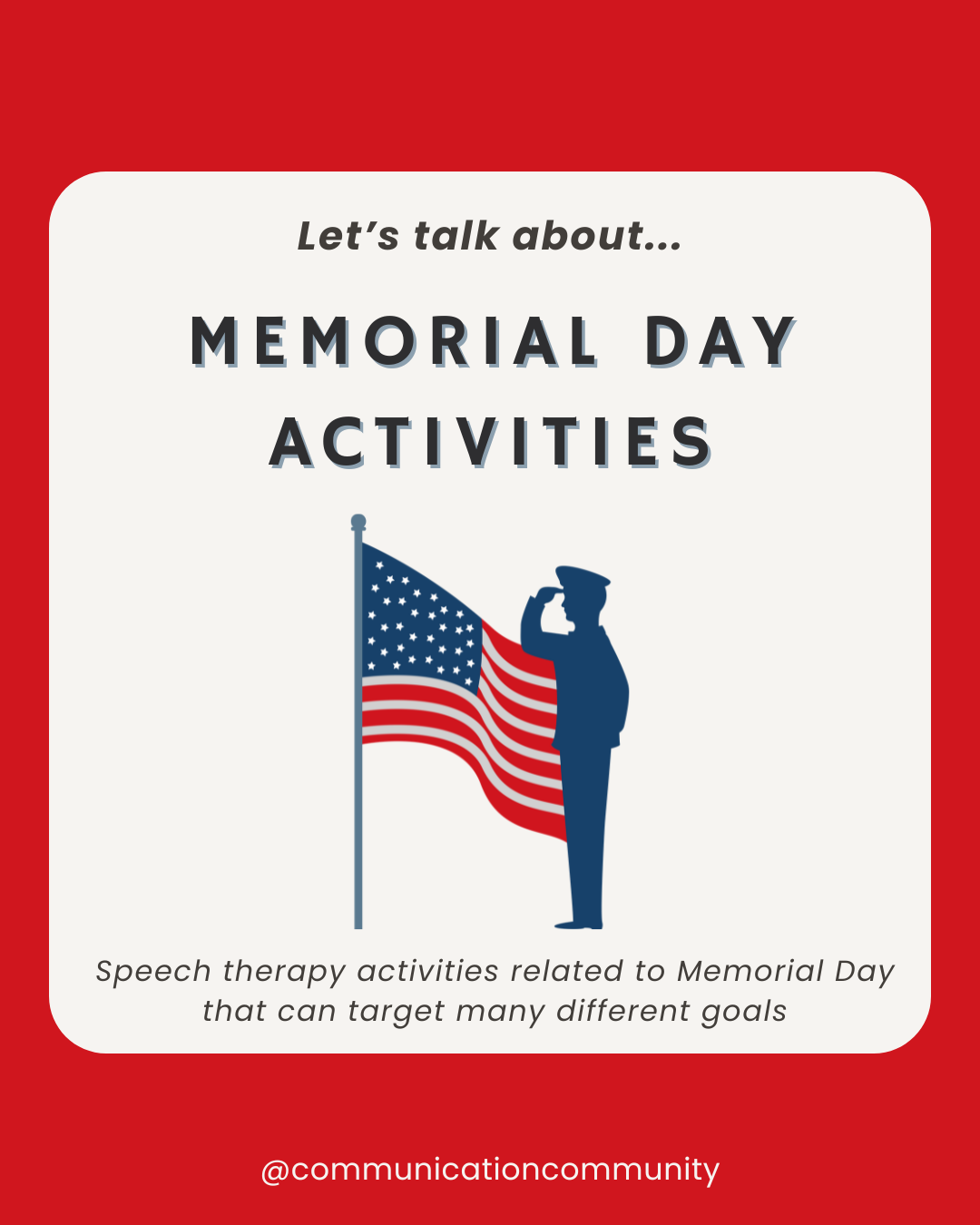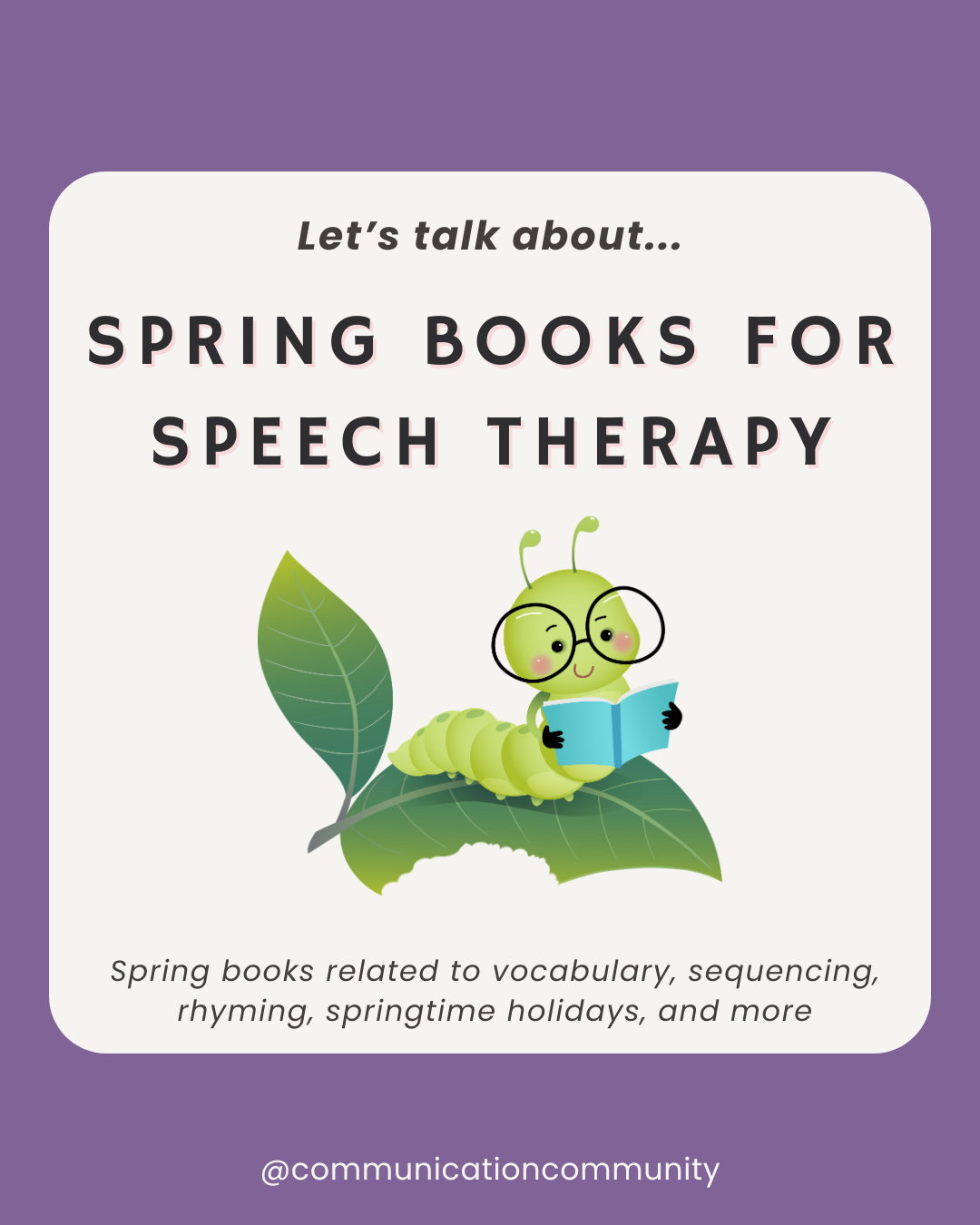How many times have you seen following directions as a speech therapy goal? If your experience is anything like mine, your answer is a lot!
After seeing following directions goals and working on them in so many sessions with so many individuals, I realized how complex following directions goals can be. They can include language concepts like prepositions (e.g., in, on), temporal concepts (e.g., first, second), conditional concepts (e.g., if…then…), and so much more.
Needless to say, there are so many aspects to consider when working on following directions!
Successfully targeting following directions skills is more complex than just giving a direction and marking whether or not the client followed it correctly.
Continue reading to learn more about following directions in speech therapy and find a following directions goal bank.
Following Directions: What it Entails
Following directions requires an individual to do many things:
- Hear the direction
- Understand the vocabulary in the direction
- Understand the grammar in the direction
- Remember the direction
- Execute the direction
When you think about all parts, you can see that there are many factors required to effectively understand a given direction. Considering all of these factors, it isn’t a surprise that a breakdown can present itself. This may occur due to a variety of reasons. For example, an individual who was given a direction may not have followed through with it because they have reduced attention or ability to hear and process the direction. They also might not know the specific vocabulary word (or words) within the direction. Difficulties in any of the components listed above can affect an individual’s ability to follow directions.
In addition to understanding all parts of the direction, in real-life situations, individuals must also demonstrate other skills, like inhibiting preferred behaviors (e.g., talking to a friend, playing with a toy) while completing the given directive.
Why One-Step and [#]-Step Directions Can Be Misleading
All directions, including one-step ones, can vary greatly in complexity. That is why it is important to be specific as to what you want the individual to do (i.e., clarify what language concept you may want to target within the direction) when they participate in tasks/activities requiring them to follow directions.
The “simple” one-step direction, “Touch the ball” is very different from the one-step direction containing qualitative concepts and negation, “Pick up the big blue ball that does not have stripes.” Similarly, the “simple” two-step direction, “Raise your hand then touch your nose,” is very different from the two-step direction containing temporal and qualitative concepts, “Before you raise your right hand slowly, touch your nose with your left thumb.”
As you can see, these directions are very different and target many different skills. However, the beauty of directions-based goals is that they can be functional and targeted within a variety of contexts and settings! Just think, every single day, even if we may not realize it, directions are a part of most of the tasks we participate in.
Components of Following Directions
Below is a (non-exhaustive) list of concepts that may be targeted in following directions.
- Working memory: remembering the directions
- Prepositions/Spatial concepts: understanding prepositions
- Size concepts: understanding size vocabulary
- Numerical concepts: one vs two, more vs less
- Sequential/Temporal concepts: first, second, third; before, after
- Qualitative concepts: colors, adjectives (e.g., spotted, striped)
- Conditional concepts: if this, then that
When writing following directions goals and targeting them in speech therapy, you may use the list above to reference what specific language component(s) would be important for the individual/client to focus on.
How to Write Following Directions Goals
If you haven’t already, check out our article that outlines How to Write Speech Therapy Goals.
For the purpose of this article, we will discuss the process of goal writing related to following directions.
The first step to writing goals is identifying the area(s) of need. These needs may be identified through formal and informal assessments, observations, and questionnaires. For example, the Clinical Evaluation of Language Fundamentals (CELF), a formal assessment, has subtests related to following directions and linguistic concepts.
Once you have identified the area(s) of need, you can begin creating the goals you are going to write and target.
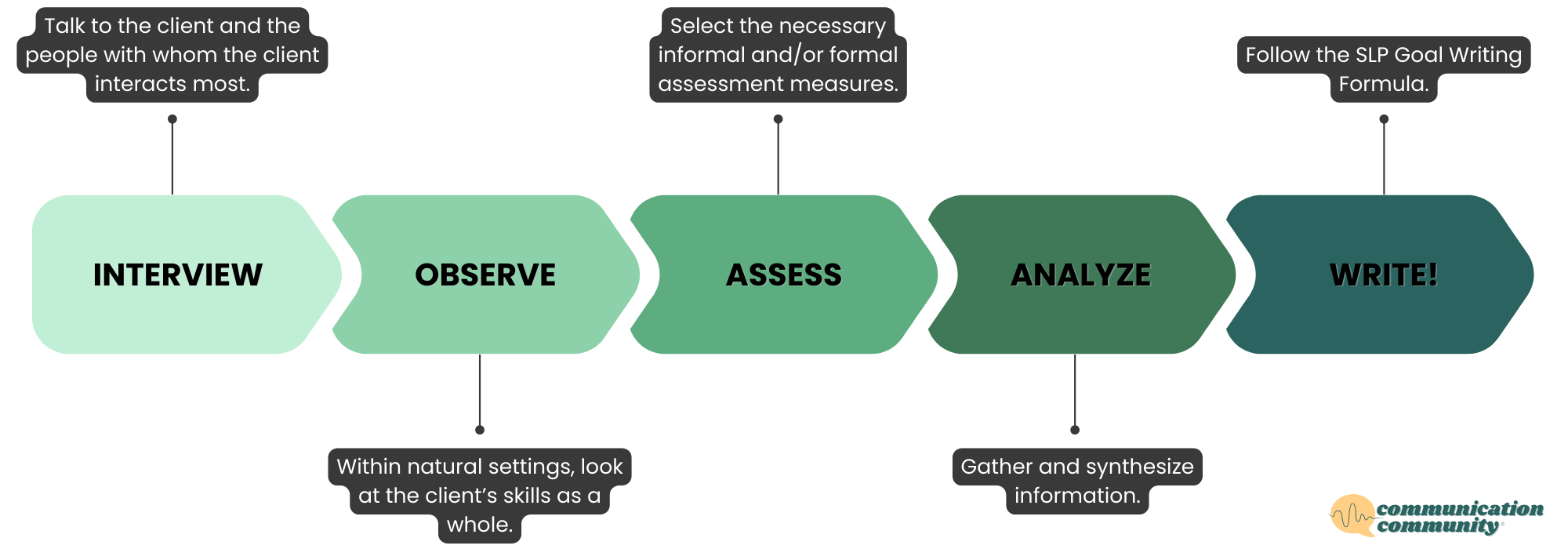
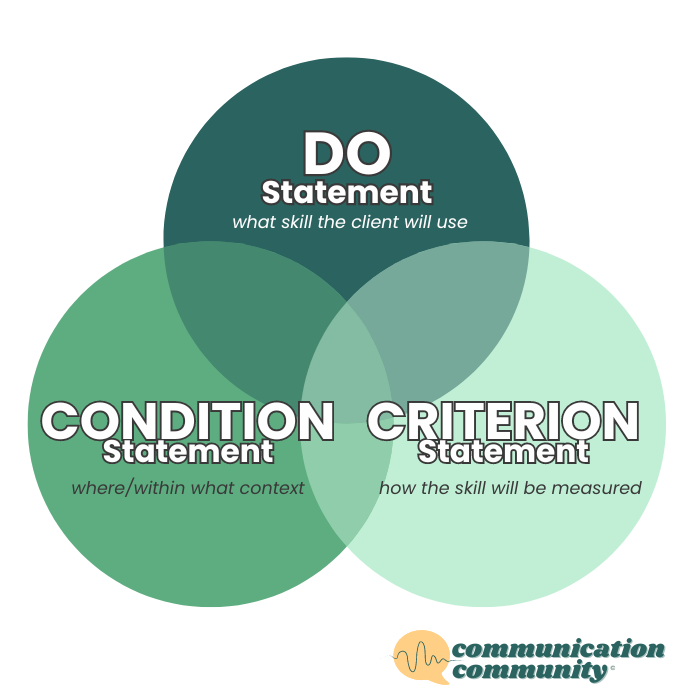
As seen above, speech goals should be written with 3* components in mind: the DO statement, the CONDITION statement, and the CRITERION statement.
*Also commonly included is consistency (we often incorporate this!). By consistency, we mean: does the individual have to meet a specific criterion more than once? A common example of a consistency measure is meeting a goal across 3 consecutive sessions. This is usually something understood by the therapy organization/service provider and is sometimes/sometimes not included in the written goal itself. Including consistency statements ensure that the skill has been generalized and provides more reliable data that the skill has been properly mastered.
DO statement
What the client is actually going to DO and the specific skill they will be working towards.
Example: follow 1-step directions containing a preposition
CONDITION statement
The specific setting and/or context where your client will work on this skill.
Example: in structured settings
CRITERION statement
How the client’s performance will be measured.
Example: in 8 out of 10 opportunities
DO + CONDITION + CRITERION
Example: [Client] will follow 1-step directions containing a preposition, in structured settings, in 8 out of 10 opportunities, across 3 treatment sessions.
Now, we have a complete goal example for following directions using our Goal Writing Formula containing the DO + CONDITION + CRITERION (& consistency) statements!
Following Directions Goals
The following are some examples of speech therapy goals that may be targeted in sessions. You can take these goals as is, or take the “do” statement from one, the “condition” from another, and the “criterion” from another. Remember: the best goals are the ones that most closely align with the client’s needs, and all clients are different!
Working Memory
Example 1: [Client] will recall and execute verbally-presented 1-step directions, related to class assignments, with 80% accuracy.
Example 2: [Client] will recall and executive 2-step directions, given visual prompts, in 7 out of 10 opportunities, across two out of three sessions.
Prepositions
Example 1: [Client] will follow 1-step directions containing a preposition, given three choices, in 75% of opportunities.
Example 2: [Client] will follow 2-step directions containing prepositions, in a play-based activity, in 9/10 trials.
Size Concepts
Example 1: [Client] will follow 1-step directions related to the size concepts big and small, with models, in 7/10 opportunities.
Example 2: [Client] will follow 1 and 2-step directions related to size concepts, within educational settings, in 15/20 trials, across two consecutive sessions.
Qualitative Concepts
Example 1: [Client] will follow directions related to colors, in structured therapy tasks, in 7 out of 10 trials.
Example 2: [Client] will follow 2-step directions related to taught adjectives (e.g., striped, spotted), while engaging in play with the clinician, in 80% of opportunities.
Mixed Concepts
Example 1: [Client] will recall and execute 2-3 step sequential directions, while in a therapy setting, with 75% accuracy.
Example 2: [Client] will follow 2-step conditional directions (e.g., if you want to color, put away the book and get markers; if you don’t, put away the book and show me what you want), 5 times in a 30 minute session.
Looking for More No Prep Following Directions Activities & Goals Resources?
Check out our Premium Community! Our School-Aged Language and Early Intervention/Preschool goal banks have even more functional following directions goals. Access the School-Aged Language Goal Bank for $20 or get it PLUS our EI/Preschool Goal Bank PLUS over $1000 of other resources (including following directions materials) for a super affordable price.
In addition to resources, within the Premium Community, you have the opportunity to collaborate with other professionals, ask questions, make requests, join live Office Hours, and find recent research summaries.

Check out some of our other goal banks too:
- How to Write Receptive Language Goals
- How to Write Expressive Language Goals
- How to Write Early Intervention Goals
References:
Gill, C., Moorer-Cook, L., Armstrong, E. J., & Gill, K. (2012). The Ability to Follow Verbal Directions: Identifying Skill Levels and Measuring Progress . The Ability to Follow Verbal Directions: Identifying Skill Levels and Measuring Progress, 36(3), 234–247.

![How to Write Following Directions Goals [with goal bank]](https://www.communicationcommunity.com/content/images/2023/10/Following-Directions-goals.png)
![How to Write Apraxia Goals [with goal bank]](https://www.communicationcommunity.com/content/images/2024/07/Apraxia-Goals--1-.png)
